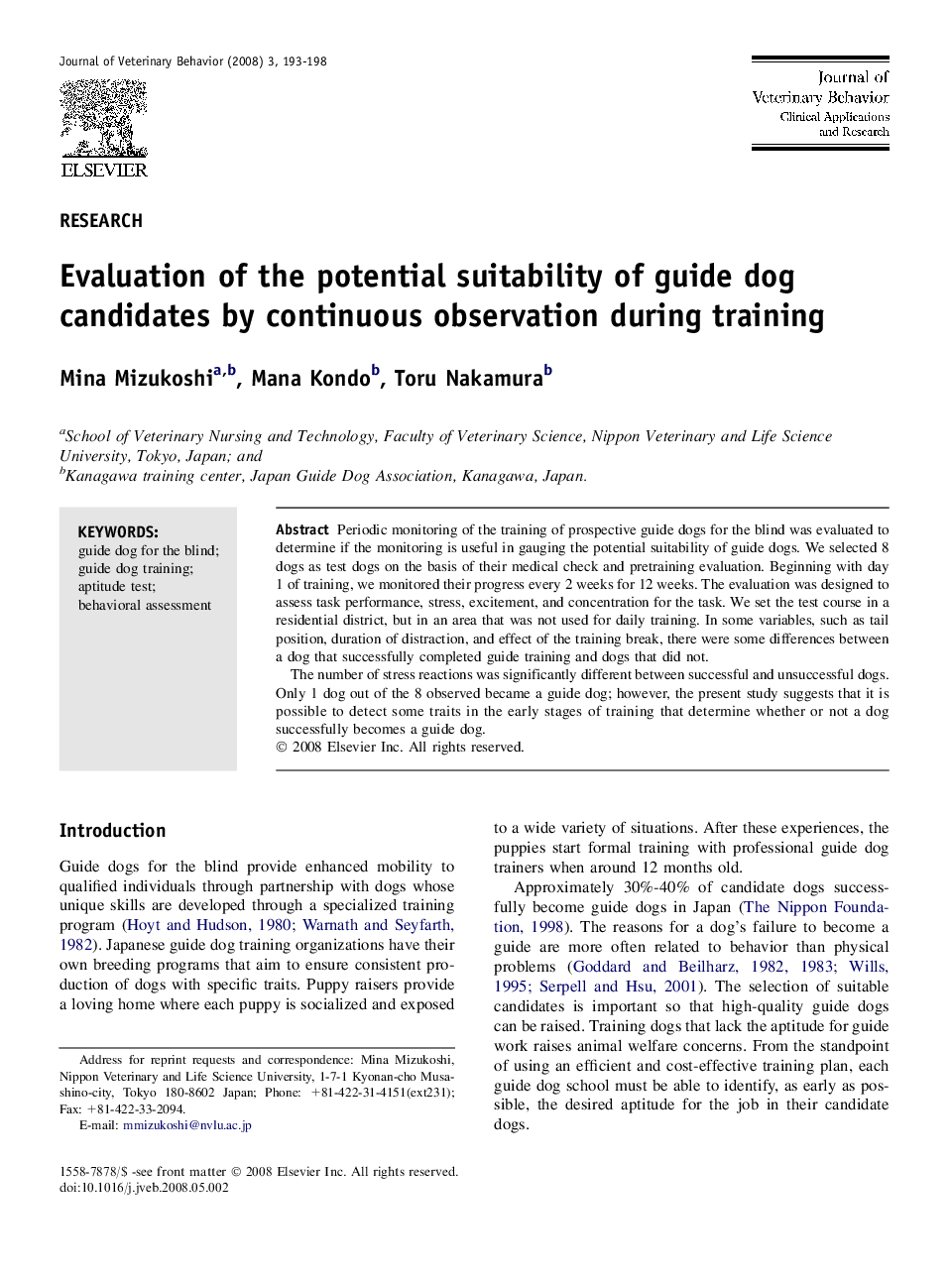| Article ID | Journal | Published Year | Pages | File Type |
|---|---|---|---|---|
| 2399703 | Journal of Veterinary Behavior: Clinical Applications and Research | 2008 | 6 Pages |
Periodic monitoring of the training of prospective guide dogs for the blind was evaluated to determine if the monitoring is useful in gauging the potential suitability of guide dogs. We selected 8 dogs as test dogs on the basis of their medical check and pretraining evaluation. Beginning with day 1 of training, we monitored their progress every 2 weeks for 12 weeks. The evaluation was designed to assess task performance, stress, excitement, and concentration for the task. We set the test course in a residential district, but in an area that was not used for daily training. In some variables, such as tail position, duration of distraction, and effect of the training break, there were some differences between a dog that successfully completed guide training and dogs that did not.The number of stress reactions was significantly different between successful and unsuccessful dogs. Only 1 dog out of the 8 observed became a guide dog; however, the present study suggests that it is possible to detect some traits in the early stages of training that determine whether or not a dog successfully becomes a guide dog.
